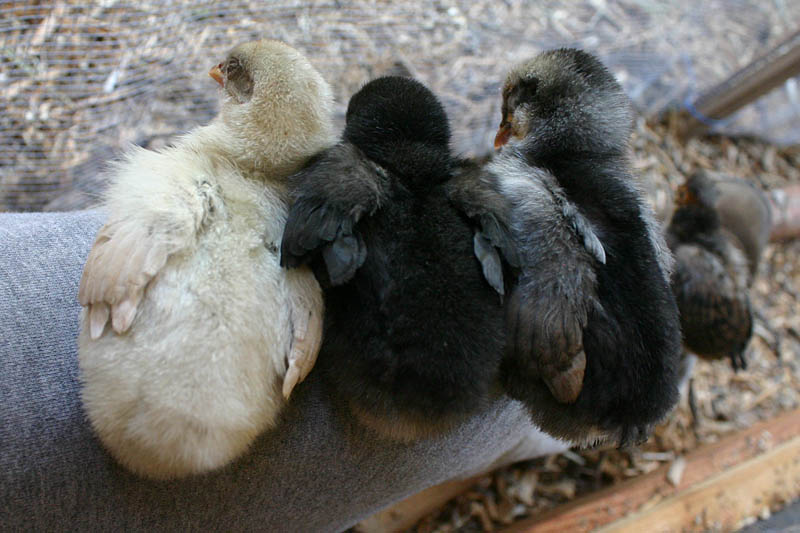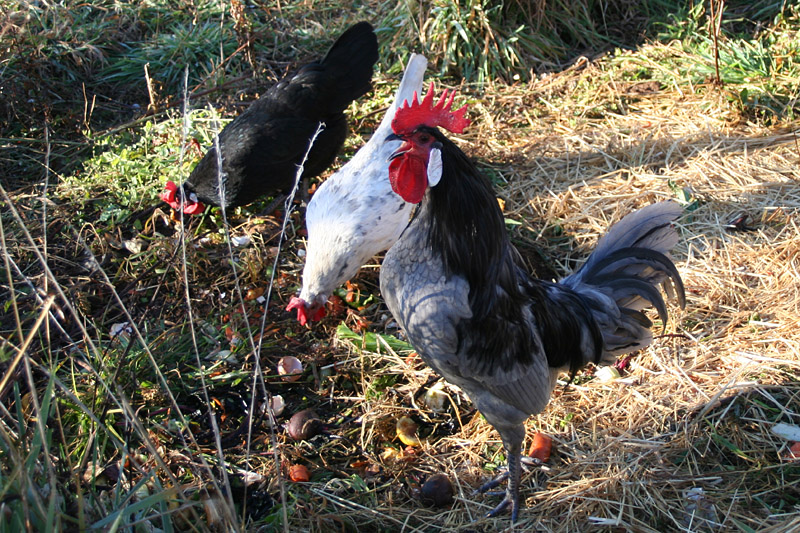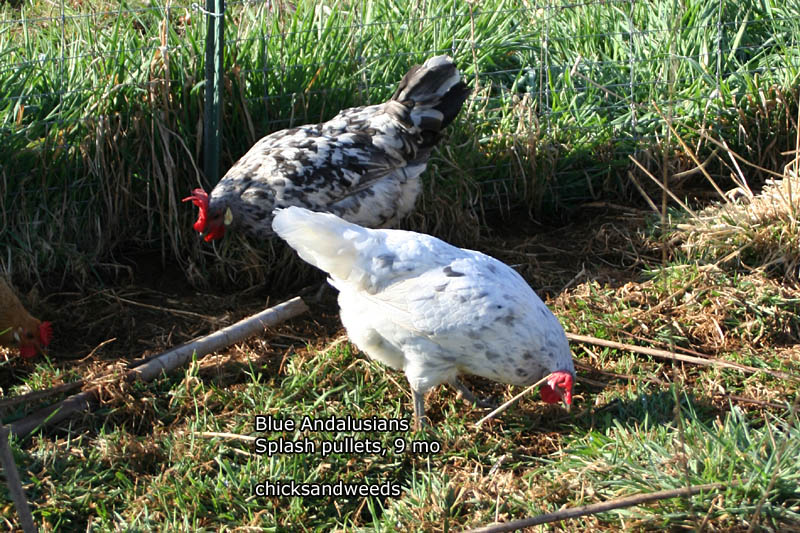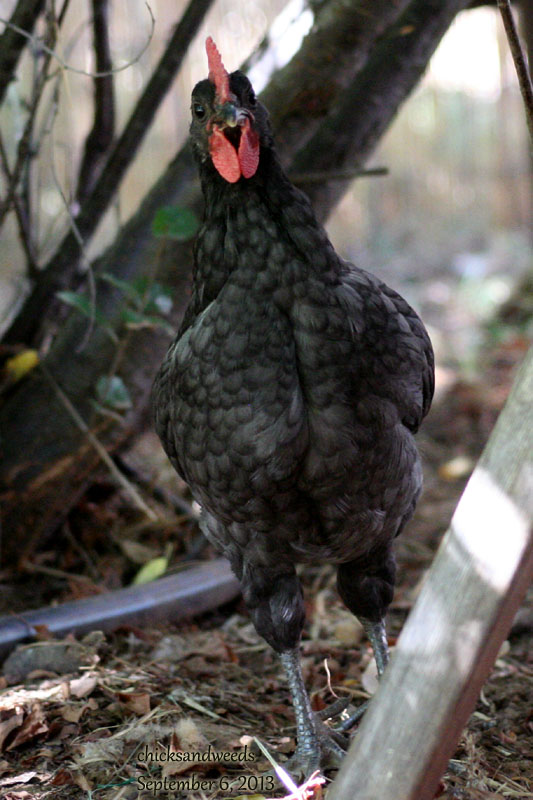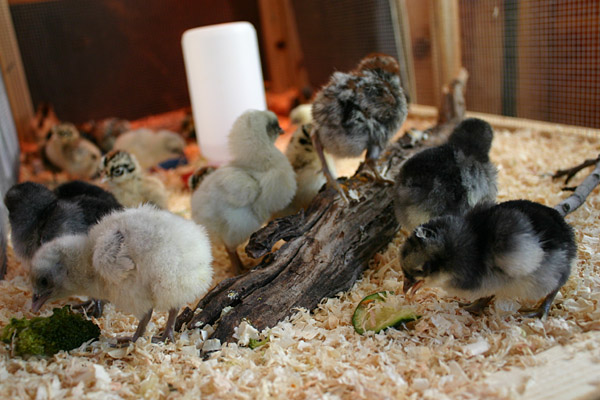 Amongst my first straight run of assorted light chickens were 11 Andalusians. They turned out to be 7 boys and 4 girls. So I read up on them and found out that Andalusians come from Andalusia, Spain originally – are moderate size (~ 5-7 lbs, female and male respectively) ornamental or dual purpose Mediterranean birds. They are not a common breed. They lay 3 – 5 mid-sizeish whitish eggs/week. They are often considered flighty, have fairly large combs and wattles and are considered heat tolerant.
Amongst my first straight run of assorted light chickens were 11 Andalusians. They turned out to be 7 boys and 4 girls. So I read up on them and found out that Andalusians come from Andalusia, Spain originally – are moderate size (~ 5-7 lbs, female and male respectively) ornamental or dual purpose Mediterranean birds. They are not a common breed. They lay 3 – 5 mid-sizeish whitish eggs/week. They are often considered flighty, have fairly large combs and wattles and are considered heat tolerant.
They come in blue, black and splash. Any white and black mating will give all blue chicks, which is the only color allowed in showing. Mating a blue pair will result in 50% blue, 25 % black and 25 % splash chicks. One this page you’ll find some of my impressions, experiences and pictures of the birds. In short: I want more…even though they are NOT the sweetest chickens (those are my buttercups) or the best moms – those are the Egyptian Fayoumis I got …by far.
I also recommend this page a tribute to Blacky – a black blue Andalusian I lost this summer – it will give you a good feel for the bird – and a very special blue Andalusian – I still miss him
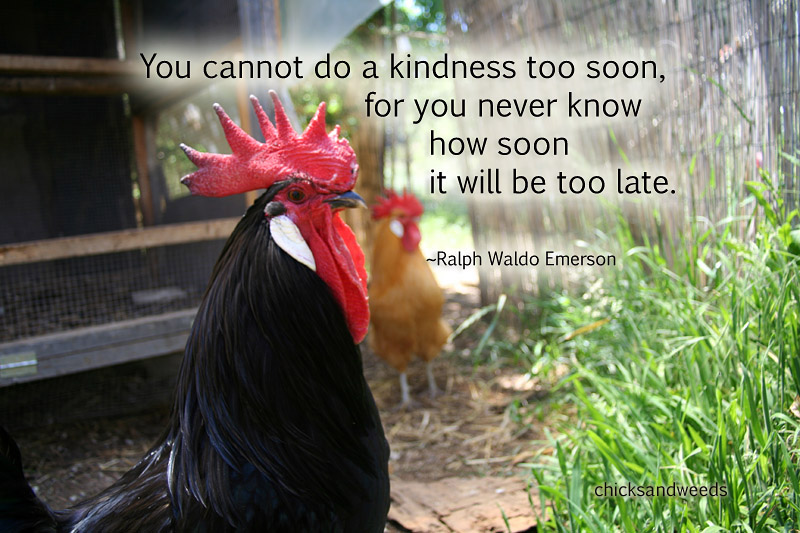
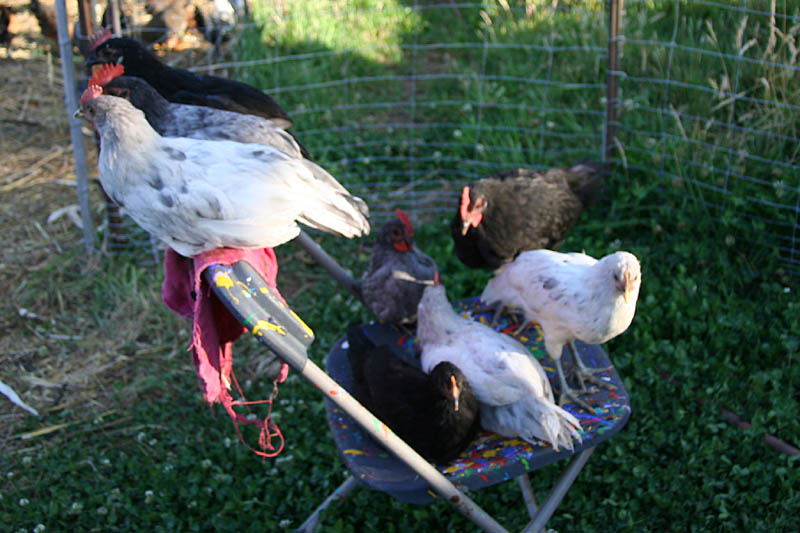
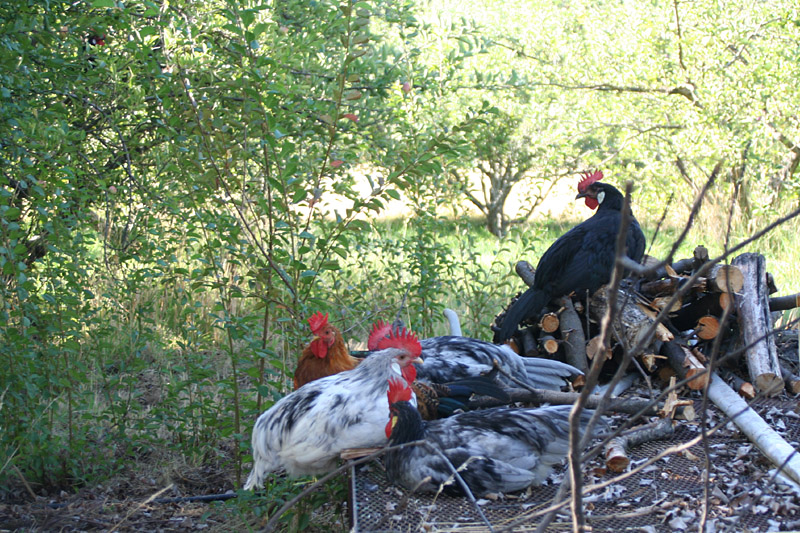
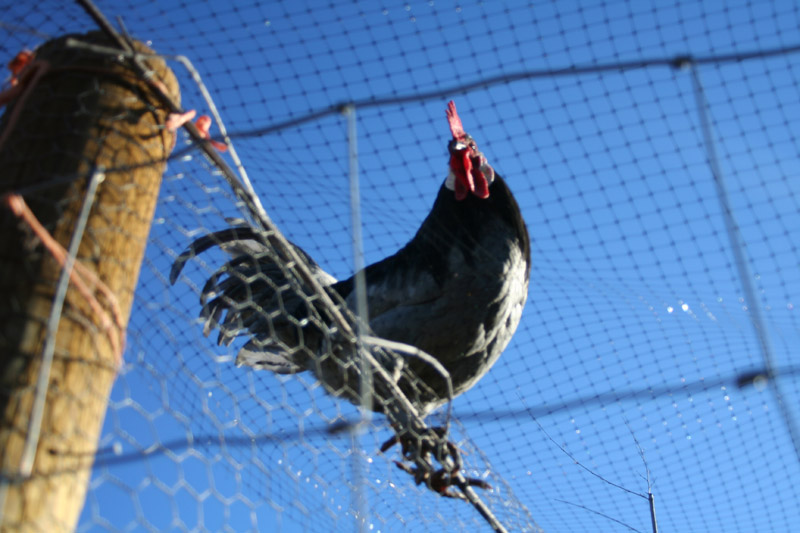
Of my 7 boys, I have 1 left, Poseidon, Houdini chicken who so wanted to be with the mixed flock in the coop that he kept finding his way there and eventually got to stay. Properly motivated and especially if there is wood at the top, an 8 foot fence will not keep them in – however, once with the flock …a 4 foot fence is enough to keep them out of the garden. I was able to re-home 2 – the others were gotten by a predator, 3 of them early on – they insisted on sleeping in a tree. …the last one by something early in the morning that managed to chase him out of the rooster run …I still feel that loss.
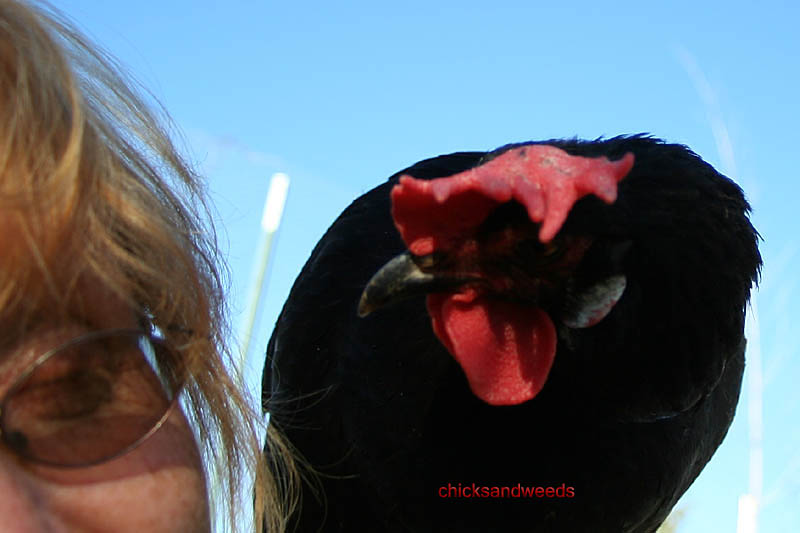
They started laying at 5 months, best I can tell, about 3-4 eggs per week, good size, which is medium.
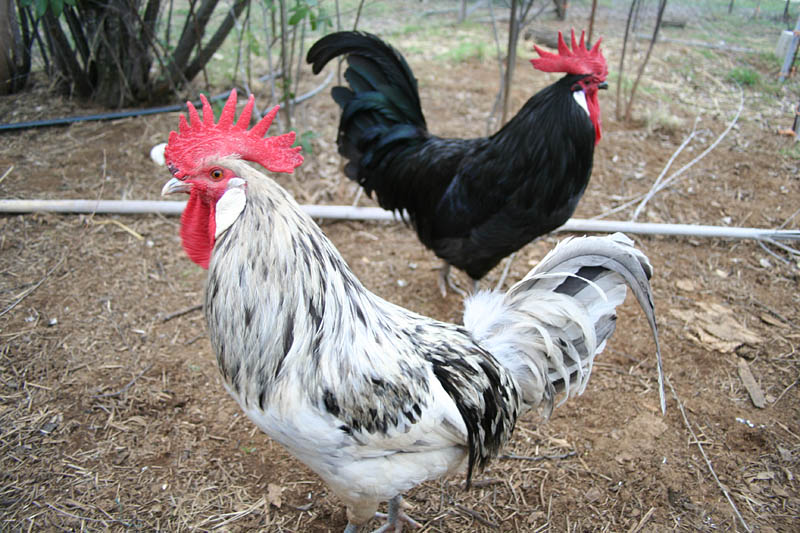
My Andalusians all come for feeding and will be hand-fed easily. One of the females (Bee Bee) is quite demanding …and I have to pick her up, put her on my lap and pet her a while :). They are all friendly, the females more shy than the males.
They are supposed to not get broody, but one of the black ones went broody …she did ok, until the chicks hatched …that freaked her out …and only 1 survived …because I finally caught on, then put her in a de-brooder, and, lucky for me and the chick, a fayoumi adopted the chick….named Lucky.
They can be a little rough on other chickens, or rather, the black ones I have, even though they are not at the top of the pecking order. Generally however, they get along.
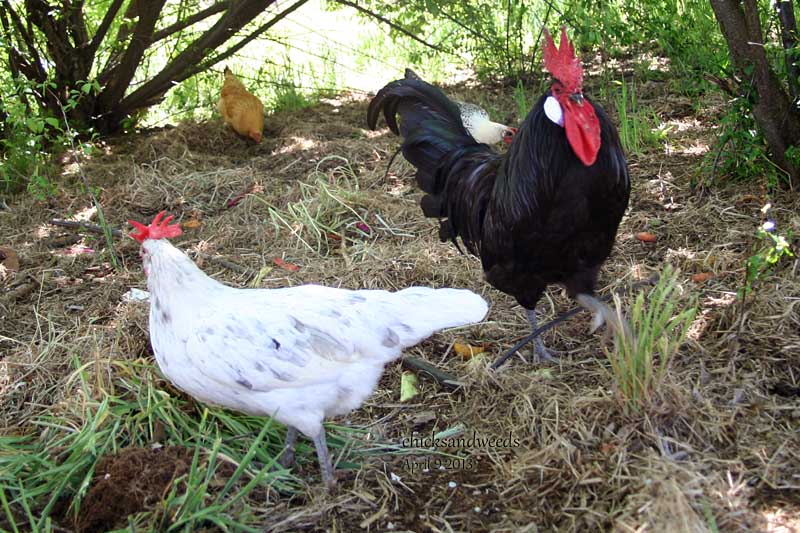
I find their coloring beautiful and interesting, though mine don’t have anything like the kind of lacing I have seen images of. Sandhill does not breed for show, but health and performance. They are decent foragers and I found them heat tolerant …and we do get triple digit temperatures. We only get light frost here and that is ok. Their combs and wattles are quite large.
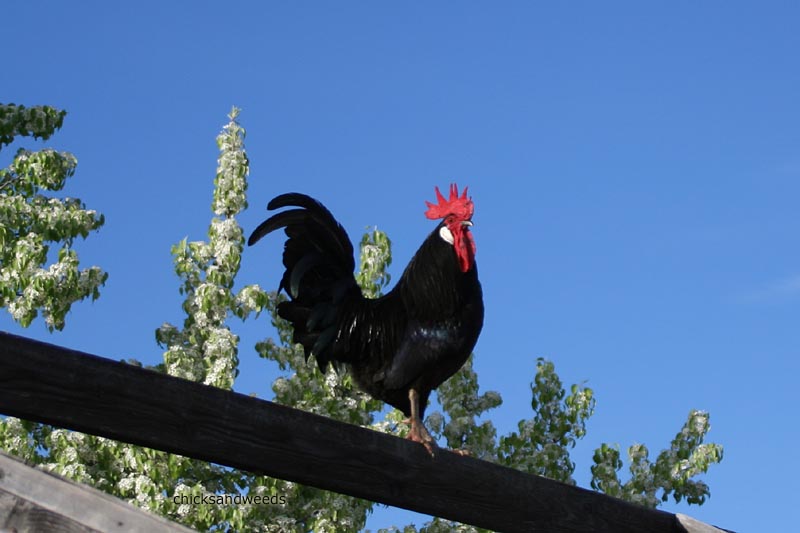
Blue Andalusians can have 4 or 5 toes, the earlobes are white, but …my first blue pullet has yellow ears – she is only 3 months old though and I will see how that develops.
When Blacky got gotten by a predator, half of him was untouched – and to honor his last gift, I ate the chicken breast – good size and tasted amazing. (I don’t normally kill any of my birds for meat). He was one of the biggest males, and if you wanted meat – you probably should breed the larger ones.
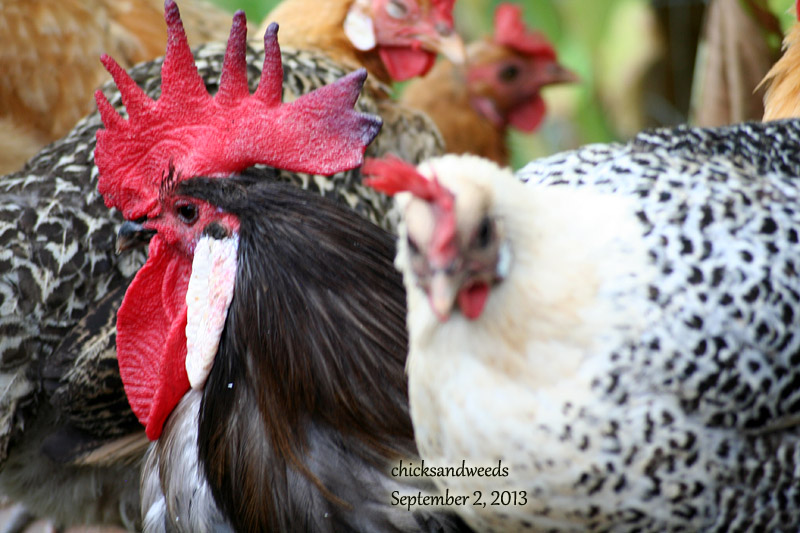
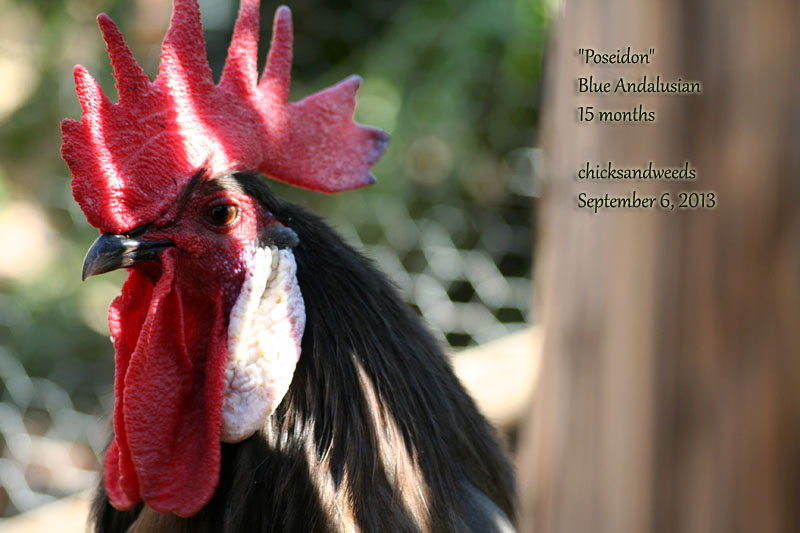 My current roo is a good roo to his hens and very friendly with me. Never an issue with aggression.
My current roo is a good roo to his hens and very friendly with me. Never an issue with aggression.
This is one of the 3 blue Andalusian babies from 2013. He has a very interesting color.
There are a lot of images on chicksandweeds facebook in case you are interested. My birds came from Sandhill Preservation and are very healthy. If you want the superior lacing for showing, you might want to look into show-breeders.
Here is what sandhill says about the bird: Large sized beautiful blue color. Excellent layers of white eggs. They have a single comb with five points. Large combs of male make winter hardiness a challenge. (See Glossary on Poultry Catalog Page for “Blue Genetics” explanation.) Admitted to the APA Standard in 1874, a graceful, hardy breed from Andalusia, Spain.

